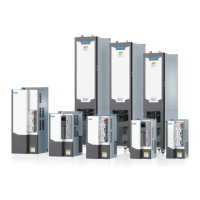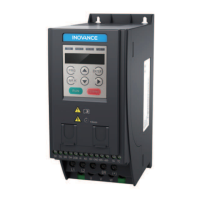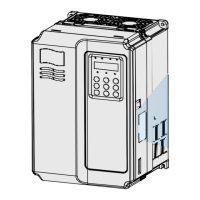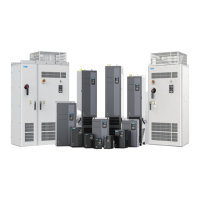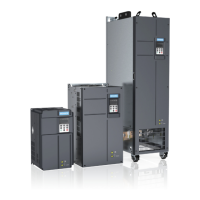Preparations Before Installation
‑14‑
2.2 Installation Environment
To fully utilize the product performance and ensure long‑term use, install the AC drive
in an environment meeting the following requirements.
Table 2–1 Installation environment requirements
Item
Requirement
Installation location Indoor
Grid overvoltage
Overvoltage category (OVC) III
Temperature
Installation/Operating temperature:
● Applications without overload: 1) ‑10°C to +50°C: without
derating; 2) 50°C < temperature ≤ 60°C: the AC drive is
derated by 2.5% for every added 1°C; 3) > 60°C: not
recommended for use
● Applications with overload: 1) ‑10°C to +40°C: without
derating; 2) 40°C < temperature ≤ 60°C: the AC drive is
derated by 2.5% for every added 1°C; 3) > 60°C: not
recommended for use
Storage/Transportation temperature: ‑40°C to +70°C (no
freezing)
● To improve the reliability of the AC drive, use the AC drive
in places without sharp temperature change.
● When installing the AC drive in an enclosed cabinet, use
the cooling fan or air conditioner to keep the incoming air
temperature below 50ºC. Failure to comply may result in
over‑temperature of the AC drive or even a fire.
● Install the AC drive on a flame‑retardant surface, and
ensure that sufficient space is left around it for efficient
heat dissipation.
● Avoid freezing the AC drive.
Relative humidity < 95% RH, without condensation
Environment
Pollution degree (PD): PD2 or below
Install the AC drive in the following locations:
● Free from direct sunlight, dust, corrosive and combustible
gases, oil mist, vapor, drip, or salt
● Not prone to vibration and away from equipment such as
punch presses
● Do not install any devices generating electromagnetic
waves or interference, such as transformer, around the AC
drive. If it is necessary to install such a device, a shielding
plate must be added between the device and the AC drive.
Otherwise, a malfunction of the AC drive will occur.
● The AC drive must be installed in a cabinet that is used in a
final system. The system must be equipped with a
fireproof enclosure providing both electrical and
mechanical protection. The installation must conform to
local and regional laws and regulations, and relevant IEC
standards.
